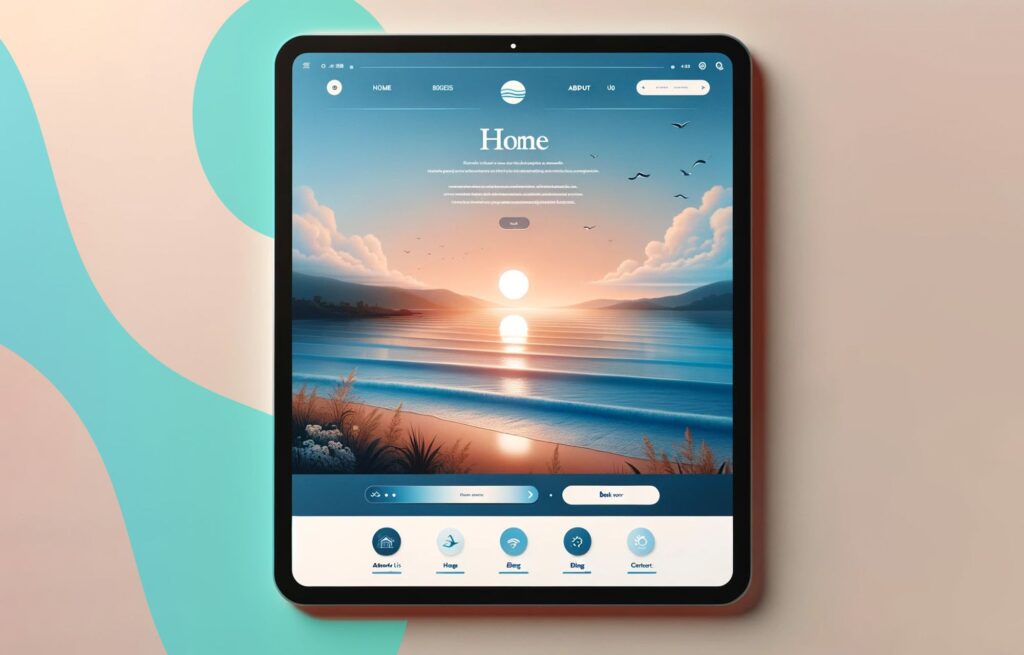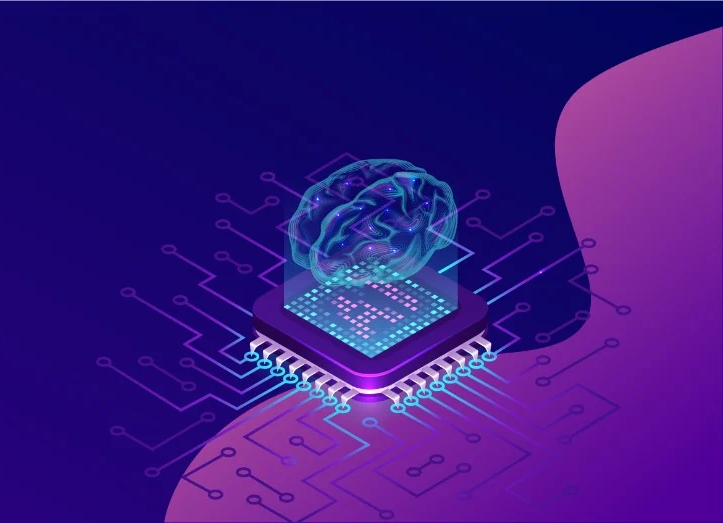
Exercising True AI Power: The Secret behind More Intuitive Interfaces

TL; DR: This blog unveils a precise description of newfound AI power to build intuitive interfaces that best enhance user experiences and business processes. The reading includes a definition and description of value on intuitive interfaces to then present diverse AI applications. Ranging from generative AI to Augmented Reality while also surveying features like voice and gesture recognition, the article describes how the power of AI can enrich both client and internal organizational journeys for added efficiency, customer loyalty, and overall market competitiveness.
Intuitive interfaces might not be our first response when conceiving the true power of AI. Yet, it’s time to turn that around when speaking of a genuine AI power that’s tracking behind highly successful development. Truly intuitive interfaces are key in today’s business landscape, and Artificial Intelligence (AI) is, quite bluntly, here to make related development and customer journeys more efficient, exciting, and encompassing. While AI integrations are adaptable to regular user experience and user interface (UX/UI) processes, they can moreover enhance day-to-day tools and operations, saving considerable time from prior implementations.
Let’s find out how we can unlock the power of AI to come up with ultra-competitive intuitive interfaces to wow not just our clients, but internal teams across organizations, as well.
What Are Intuitive Interfaces and Why Are They Important?
Defined as platforms that work as users expect, truly intuitive interfaces fit user needs and result in experiences of value. In an ideal world, users wouldn’t even have to think about interfaces at all! As Princeton University highlights, it’s essential for products to align with user expectations in a way that keeps user cognitive load to the bare minimum. Intuition is the key word here. People should be able to intuitively navigate platforms to solve their needs.
To determine the value behind the above measures, we need to consider just how heavily successful customer journeys — and businesses — rely on seamless user experiences (UX). Emotional design has proven just how much we’re able to tap into three different user cognitive levels to generate positive emotional connections with clients, customers, and consumers. Beware that stirring negative and other emotions based on our design is also possible. Furthermore, Wharton has flagged just how much design isn’t the heavy suit of UX, and claims data-driven analytics at the service of great UX are.
Either way we arrive at it, first-class user experiences, for which intuitive interfaces can be a standing backbone, have long and naturally been known to enhance trust, secure returning clients and business, foster highly coveted word of mouth referrals, and overall boost a sense of loyalty in our target audiences. That level of compromise in such a tightly knit relationship is simply invaluable to any business.
Ready to catch up on how the power of AI can help build that? Let’s go there.
Generative AI: Where Generative Artificial Intelligence Is Taking Us
Heavily dependent on Wharton’s rightfully precious data as a main tool for limitless opportunities, generative AI can provide all sets of innovative text, media, and even code. With natural language processing (NLP) in its arsenal, AI can easily interpret unstructured data to provide new ins and outs, which can generate valuable new factors.
When combined with powerful image editing and production tools, such as Adobe Photoshop, generative AI can solve image-processing workflows with little input. In our experience, Adobe Photoshop solutions have helped us improve business workflows to make internal image processing way easier on entire corporate teams.
Though currently in beta testing, another unique new feature Adobe’s Photoshop tool is bringing to the table is the creation of lifelike images through features powered by generative AI with an advanced fill.

This sort of intelligence can furthermore deviate from text-based orientations to produce graphic controls and other display efficiencies that steer away from the more common text-based commands. When those aren’t enough, however, AI is taking text-based experiences to a new level.
Text-Based Large Language Models (LLMs): Opening Conversations up to New Paradigms
Going from graphics to conversations, chatbots and other text-based leads in conversational interfaces can greatly improve customer satisfaction on business’ chat-based fronts. These tools can improve client relations, solve user queries, and enhance internal company processes — on the spot.
Have you ever wondered what GPT stands for when we praise Chat GPT, by the way? As a Generative Pre-trained Transformer (GPT), we’re really talking about an improved understanding of natural language that results in a superb conversational interface here.
As Senior Product Designer Maximilian Piras dictates in the above referenced article, these tools can now easily organize unstructured datasets for human-like (or greater) intelligence responses. Roles are underscored as pre-designed, available features that users can also click to beat blank or empty pages and interfaces to prompt a certain use.
Intuitive interfaces can also incorporate suggestive content, such as the click of a button, to furthermore anticipate what users can do on these platforms, not just tend to requests.
Be ahead of the game with the power of AI for intuitive interfaces.
Microsoft Copilot: Microsoft Office’s New Conversational AI Feature
As our blog Elevate Your Game: Unleashing Dynamics 365 with Copilot explains, Microsoft’s AI assistant gives companies a wide range of possibilities that go from automating daily tasks to developing custom applications. Ideal for simple bot building, Copilot brings about key integrations with a suite of Business Applications Solutions that have been strategically designed to streamline operations, enhance customer engagement, and improve team experience. This AI is actively shaping the future of business productivity today.
Its centralized hub also breaks down silos for more agile teamwork, and perhaps more importantly, its intelligent data management and analysis is truly boosting how teams can make more informed decisions.
As a final reference of its wide use, we’ll just highlight the customer insights portion of the tool as it provides key features that can reshape how organizations handle marketing projects and campaigns for augmented productivity, efficiency, and speed to market.
But enough with that. Let’s move on to another of AI power’s tentacles.
Voice and Gesture-based Controls: Taking Off into New Heights
If we’re really looking into the future for the power of AI, making the best of people’s voice and gestures at the time of interaction is certainly planted in our seeds for futuristic living. Let there be no doubt that AI algorithms can bring about the next paradigm shift in digital transformations to produce truly seamless user experiences.
Siri and Alexa have long been making use of voice prompts to provide next-level products. AI can further integrate voice commands and gestures, such as the balloons you may have already seen popping on screen at a glimpse of a peace and love signal nowadays. The combinations are truly endless!
The remaining question is: Which challenge needs solving for us to integrate AI efficiently as part of the latest tech implementation?
Related Read: How Generative AI Is Transforming Software Engineering
Gone Are the Days of Tutorials and Big Learning Curves!
Interfaces now can be so intuitive that manuals, tutorials or academies are no longer needed. People can jump on board new platforms and intuitively work their way across tasks. For that, AI’s helpers, bots, and other tools can come in to save the day. Available as assistants with whom people can have real-time conversations to sort their needs, these AI integrations are really making a difference.
Augmented Reality (AR): The Augmented Power of AI
Yet, taking all the above to an entirely new level, Augmented Reality can come as the epitome of customer satisfaction. Able to produce entire new environments for users to envision provided services, such as already exist in banking, retail, and other consumer-driven industries, AR integrations can literally provide entire new scenarios for users to immerse themselves in a new experience.
Immersive environments like these can seem so real that AI is now bending what’s imaginable at the tip of user’s nose. People can go shopping in virtual shopping centers to put items on their carts, or see their different banking products more tangibly via AR.
The list above should include the use of this technology to provide home viewings, potential neighborhoods in complex development, or even just the new piece of furniture in the new baby room. Again, the options are too vast to count!
Augment Your Flexibility and Company Efficiency with AI Power
Not just on the external, client-facing, customer journey, but also internally to boost company processes, AI is the new way to beat customer and employee journeys that make life so simple that we’re already navigating at the next level.
We’ve all seen it, too! Whether it’s Canva’s Magic AI feature, providing new image or video creations based on quick prompts, or new show suggestions specifically tailored to suit our taste whenever we hop on Netflix, AI is running in the background of day-to-day solutions and services to make the best of user habits and patterns.
Are you wondering how to optimize your user journey, along with internal and external processes, to elevate your business? Contact us to find out how we can help.




